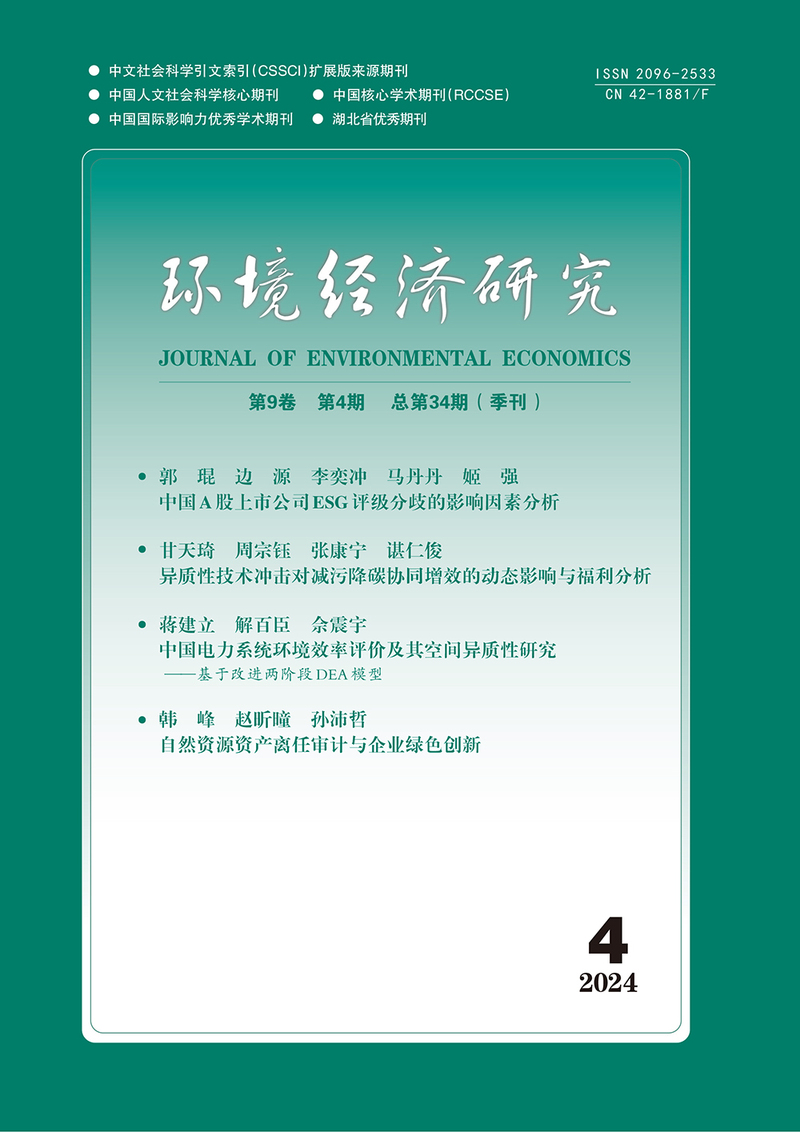摘要:在实现碳达峰碳中和目标下,研究中国现实背景下人口、消费的规模与结构变化对碳排放的影响具有十分重要的理论和现实意义。论文把内生人口增长过程放入以能源为基础的经济增长模型来分析其对碳排放的动态影响,在技术水平不变的内生人口增长复杂动态系统中,存在几种类型稳定状态的可能性和相对于系统参数变化具有非同一般的比较静态均衡,把技术进步加入模型中时,经济系统中变量存在多条可持续增长路径。社会最优消费受到内生人口增长率的影响,意味着人口增长率影响着消费从而影响能源生产和消费,从而对碳排放量产生影响。实证研究结果表明:人口规模、消费规模与碳排放呈显著的正相关关系,但消费对碳排放影响的弹性系数要大于人口规模对碳排放影响的弹性系数;非食品烟酒消费支出的占比对碳排放有显著的正影响;人口城镇化对碳排放的影响弹性显著为正;劳动人口比率对碳排放的影响弹性显著为正;平均家庭规模对碳排放的影响弹性显著为负;人口教育结构的回归系数在1%水平下显著为正,但是影响弹性系数较小;用能源利用效率表示的技术弹性系数显著为正。本文建议要注意人口结构的变化对碳排放的影响,倡导低碳和绿色的消费模式。
关键词:人口;消费;碳排放;多条增长路径
The Impact of Population and Consumption Scale and Structure on Carbon Emissions: Theoretical Mechanism and Empirical Analysis
Chen Xiangyang
Abstract: In order to achieve the goal of carbon peak and carbon neutrality, it is of great theoretical and practical significance to study the impact of population and consumption scale and structure change on carbon emissions in China. This paper evaluates the dynamic effects of adding an endogenous process for human population growth into a energy-based economic growth model. Endogenizing human population growth in a static, constant technology form of the model gives rise to the possibility of multiple steady states of several types, and unusual comparative static responses to changes in the system’s parameters. Adding technological progress to the model gives rise to the possibility of multiple sustainable paths for the variables in the system. Society’s optimal consumption policy takes into account the effects of endogenous human population growth. Consumption can have an effect of energy consumption and carbon emissions. The results of empirical analysis are as follows: population size, consumption scale and carbon emissions are significantly positively correlated, but the impact of consumption on carbon emissions is greater than that of population size. The proportion of non-food tobacco and alcohol consumption expenditures has a significant positive impact on carbon emissions. The impact of urbanization and labor ratio on carbon emissions is significantly positive, while the impact of average household size on carbon emissions is significantly negative. The regression coefficient of the educational structure of population is significantly positive at the 1% level, but the coefficient of elasticity of influence is small. The coefficient of elasticity of technology expressed by energy use efficiency is significantly positive. We should pay attention to the impact of demographic changes on carbon emissions and advocate low-carbon and green consumption patterns.
Keywords: Population; Consumption; Carbon Emissions; Multiple Growth Paths
基金项目:本文是广东省哲学社会科学“十三五”规划一般项目“我国环境成本的区域特征及平衡机制研究”(GD17CLJ01)的阶段性成果。
全文:![]() 人口、消费的规模与结构对碳排放的影响:理论机制与实证分析.pdf
人口、消费的规模与结构对碳排放的影响:理论机制与实证分析.pdf
